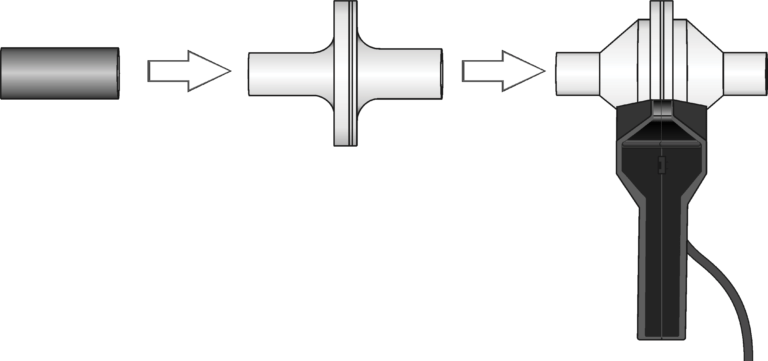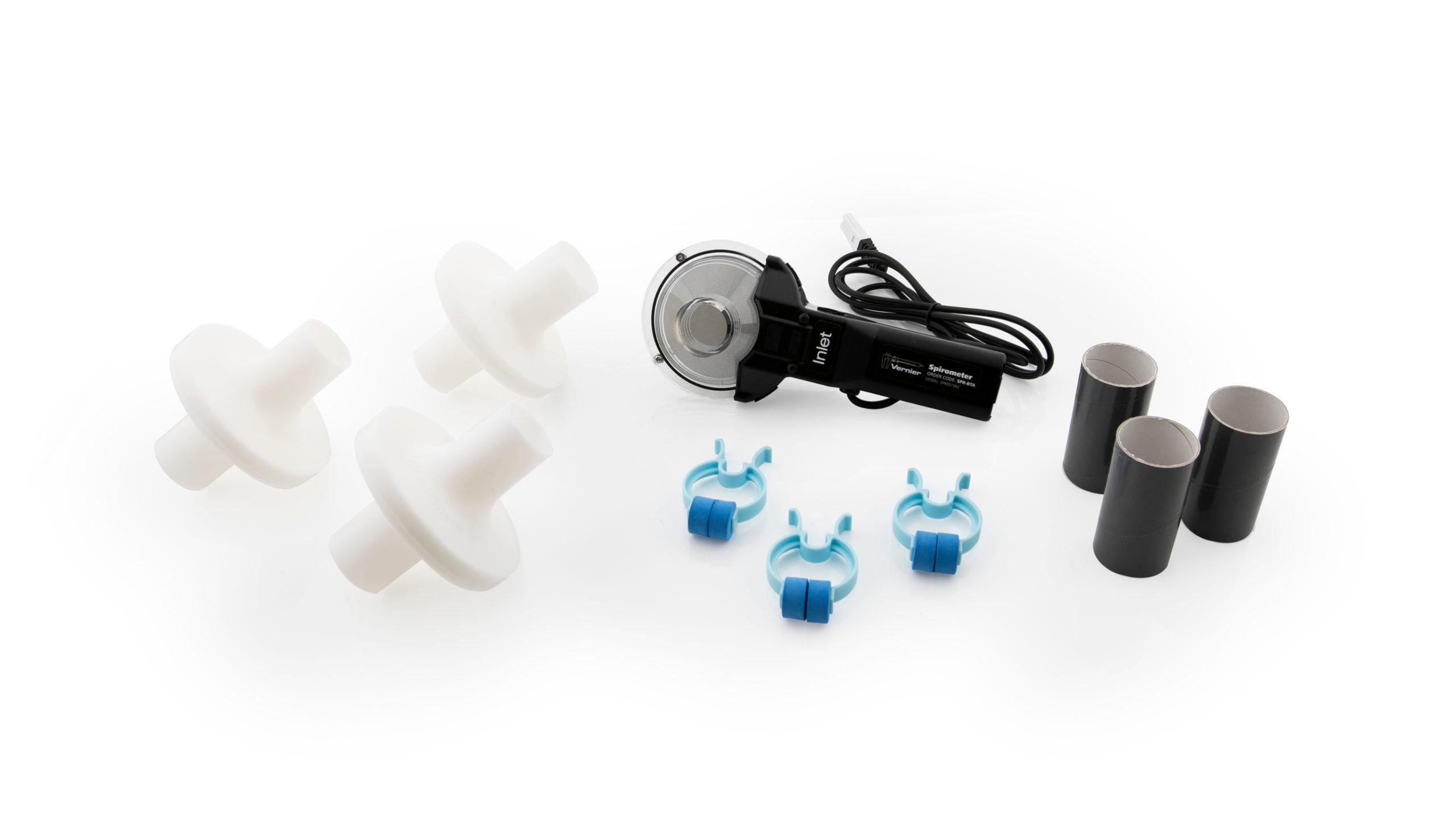Lung Volumes and Capacities
Experiment #19

Introduction
Measurement of lung volumes provides a tool for understanding normal function of the lungs as well as disease states. The breathing cycle is initiated by expansion of the chest. Contraction of the diaphragm causes it to flatten downward. If chest muscles are used, the ribs expand outward. The resulting increase in chest volume creates a negative pressure that draws air in through the nose and mouth. Normal exhalation is passive, resulting from “recoil” of the chest wall, diaphragm, and lung tissue.
In this experiment, you will measure lung volumes during normal breathing and with maximum effort. You will correlate lung volumes with a variety of clinical scenarios.
Objectives
In this experiment, you will
- Obtain graphical representation of lung capacities and volumes.
- Compare lung volumes between males and females.
- Correlate lung volumes with clinical conditions.
Sensors and Equipment
This experiment features the following sensors and equipment. Additional equipment may be required.
Ready to Experiment?
Ask an Expert
Get answers to your questions about how to teach this experiment with our support team.
- Call toll-free: 888-837-6437
- Chat with Us
- Email support@vernier.com

